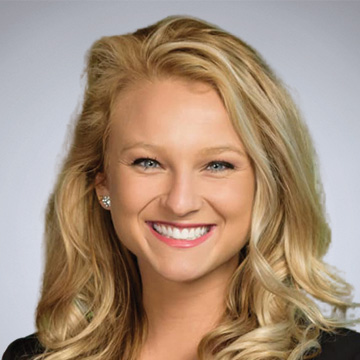If funding a commercial real estate project in rural America sounds complicated, defining it is downright controversial. Ask a rural resident to describe the label and they’re likely to point “over there” as they describe the smaller town to their north, south, east or west — anywhere but here.
If home is where the heart is, “rural” is evidently where the people aren’t. The resistance to being labeled as living in a rural location might have something to do with the stigma. To an outsider, living in rural America is all about a void of trendy restaurants, fashionable boutiques and, heaven forbid, sufficient broadband.
“Many business owners may be surprised to find that the USDA supports more than just agriculture. In fact, the USDA has a series of loan programs that don’t necessarily have anything to do with agriculture.”
To the typical commercial mortgage broker, the misunderstandings can run deeper. If rural living is unfamiliar, a successful rural enterprise is unfathomable.
Such judgments make closing deals in rural America — however enigmatic the label may be — a bit different than doing so in the rest of the country. While financing a business acquisition in the heartland may seem similar to a deal in a large metro area, there are some unique challenges faced by mortgage brokers and lenders that work with businesses in rural areas.
Heartland hurdles
Access to capital is one of the main issues facing small businesses across the country. This can be even more of a problem in some rural areas where there are few banks or other lending institutions from which to choose. On top of financing issues, businesses in rural America were also impacted by the COVID-19 pandemic and the resulting shutdowns.
Another hurdle is less about opportunity and more about familiarity. Like anywhere in the country, lenders are reluctant to lend to operations they don’t understand. For too many lenders, the concept of making a bottom-line profit in a sparsely populated location is simply unthinkable. Therefore, many lenders are not interested in funding businesses in these areas.
Rural regions also may lack some of the necessary infrastructure to help businesses thrive, such as high-speed internet, transportation networks and skilled workers. This can make it more difficult for business owners to secure loans as well as customers. The irony? Solving some parts of the infrastructure puzzle may be less burdensome outside the imposing reach of big-city building codes and high-rise towers.
Small towns also have unspoken boundaries that must be observed. Commercial mortgage brokers working with these types of clients must do so with care as a tight-knit community can often be more easily disrupted than one in a large metro area. It is essential for any project to maintain a deep understanding of the history and makeup of the market. Only with such finesse can you thread the needle of contributing to the community without disrupting or offending the locals.
A helpful hand
In response to the unique issues facing businesses that seek capital in rural areas, the U.S. Department of Agriculture (USDA) created its Rural Development program. Many business owners may be surprised to find that the USDA supports more than just agriculture. In fact, the USDA has a series of loan programs that don’t necessarily have anything to do with agriculture.
One of the agency’s most popular options is the USDA business and industry loan program, which supports entrepreneurs and businesses of all sizes with loans of up to $25 million. The catch is that businesses must operate in communities with a population of 50,000 or less. This is an all-encompassing loan program that fits nearly all types of businesses, including manufacturing and production companies, family entertainment centers, hospitality and retail assets, nonprofits and more. It can be used for many purposes, including acquisitions, refinancing, equipment purchases and working capital.
There is also the USDA community facilities loan program, which support health care and child care services, education, utilities and more. Other funding options include the USDA Rural Energy for America Program, which offers loans and grants to agricultural producers and small businesses to upgrade, replace or construct energy-efficient systems and renewable energy facilities. USDA food supply chain loans help to support nearly every aspect of the food chain, from farms to cold storage and distribution. The program, which offers up to $40 million per borrower, is temporary and has a total funding budget of $1 billion.
These government-guaranteed programs follow the lead of similar programs from the U.S. Small Business Administration and partner with lenders to reduce the risks associated with rural lending. The USDA offers various guarantees by loan amount and lenders can offer businesses up to 100% financing in some cases. These programs help to alleviate the primary concerns of risk-averse lenders, and they allow funds to flow to the infrastructure and amenities that make rural communities strong. The USDA understands that keeping agriculture alive requires a flourishing rural America. One simply cannot survive without the other.
Rural renaissance
Due to the post-pandemic work-from-home movement, rural communities appear to be more popular than ever. COVID-19 made unexpected living preferences plain: When workers were freed up to work remotely, overcrowded metro areas were suddenly forced out of fashion.
Many high-earning tech workers flocked to the natural beauty and quiet comforts of the rural parts of America. What the future of work will be is anyone’s guess, but it’s clear that the charms of small-town living are being discovered by members of a new generation.
Rural America also holds benefits for small businesses. According to the nonprofit SCORE, which works to boost small business and entrepreneurship, the cost of starting and running a business in a rural area is typically lower than in an urban area. This provides a distinct advantage to entrepreneurs looking to bootstrap their businesses and attract investors in search of lower-cost opportunities.
These costs may have something to do with the fact that rural businesses actually outperform their urban counterparts in some key metrics. According to a survey from the 12 Federal Reserve Banks, rural businesses have higher profit margins and longer survival rates than urban businesses.
● ● ●
Whether you live amid skyscrapers or open sky, the concept of rural America is likely an enigma. But this is changing. After the past few years of remote-work growth, small towns have been thrust into the spotlight.
For commercial mortgage brokers and lenders, the 17% of businesses that operate in rural communities may seem like risky options. But a closer look at the details may change their minds. While rural businesses grow more slowly, they tend to be in lower-cost industries and are more likely to be profitable.
Combine such statistics with the USDA’s Rural Development loan programs and mortgage brokers should be excited about securing capital for businesses in the nation’s heartland. The USDA’s financing options stand at the ready to fund rural America’s next renaissance. ●
Author
-

Kaitlyn Crowder is the marketing director at North Avenue Capital, a specialized commercial lender in Ponte Vedra, Florida, that focuses on providing USDA business loans of $2 million or more to rural America and beyond. In 2022, Crowder received the Jacksonville Business Journal’s 40 Under 40 award for her community leadership. Crowder currently serves on the University of South Florida’s digital marketing advisory board, the Best Buddies of North Florida advisory board and The Human Collective’s advisory board. Additionally, she is a three-time opening speaker at the National Alliance of Commercial Loan Brokers’ annual conference.





